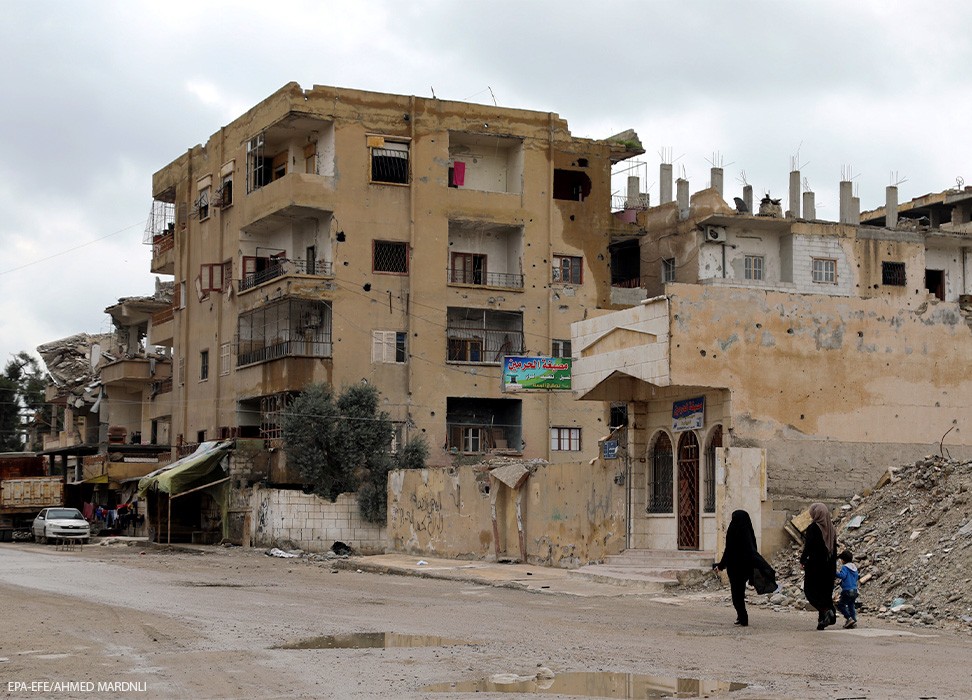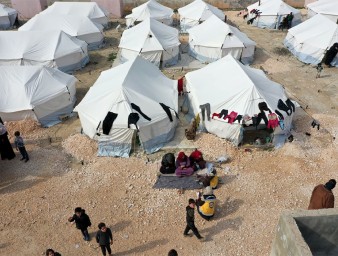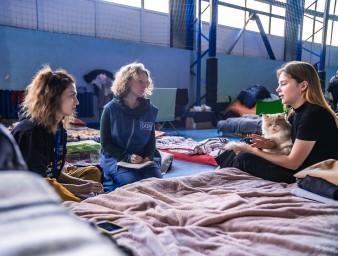Behind the data: Recording civilian casualties in Syria
11 May 2023

Over the past ten years, an average of 84 civilians have been killed every day in direct connection to the war in Syria, according to UN Human Rights. By 2022, an estimated 306,887 civilians had been killed since the armed conflict began in the country. These staggering numbers reveal the brutal impact of the conflict on the lives of civilians.
Compiling such data takes a team of human rights and statistics experts. UN Human Rights monitors and reports on the human rights situation in many conflict-affected countries, seeking to highlight emerging human rights concerns and provide early warning analysis.
In many conflict-affected countries, UN Human Rights carries out civilian casualty recording, which means documenting the number and circumstances of direct conflict-related deaths. Casualty recording is the systematic collection of data on conflict-related deaths, which in addition to assessing the toll on civilian casualties, also makes it possible to identify human rights concerns, such as the impact of highly explosive weapons in urban areas, or the potential disproportionate character of certain attacks.
The challenges of collecting reliable data in conflict settings are numerous. In the ten years of the conflict in the Syrian Arab Republic, the UN Human Rights team worked with several civil society organizations on the ground, in carrying out this grueling work of documenting and reporting on deaths of civilians during active hostilities.
One of these organizations is the Syrian Network for Human Rights (SNHR). It operates in dangerous environments, sometimes at personal risk to its members. It has nevertheless maintained consistency in the quality of its work, ensuring that individual casualties are recorded, and their stories are told.
“We monitored on a daily basis many areas and residential neighborhoods that were stormed by the parties to the conflict or were bombed, and we faced enormous security challenges having lost colleagues who were killed or arrested,” said Fadel Abdul Ghany, Founder and Executive Director of SNHR.
The Syrian Observatory for Human Rights (SOHR) faces a similar challenging reality.
“It is not easy for any organization to work under such dangerous and difficult circumstances and obstacles hindering the documentation and monitoring activities,” said Rami Abdurrahman, Founder and Director of SOHR. “However, we cooperate with each other in order to improve the future of Syrian people who have been grappling with destruction and hunger for years.”
Getting the data right
While every effort is made to ensure that information on civilian casualties is as comprehensive as possible, the team faces challenges to access this information because of active hostilities or the displacement of people. This means that the data they collect is not comprehensive and can’t cover all the incidents occurring in Syria.
To address these limitations, UN Human Rights’ Methodology, Education and Training Section (METS) in Geneva, Switzerland is leading a project that connects innovative statistical and data science techniques with human rights monitoring. UN Human Rights statisticians and data experts have partnered with statisticians from the Human Rights Data Analysis Group (HRDAG), in a project that integrates information collected from multiple sources, bringing additional value to these independent efforts.
“The information collected by these documentation groups is so important,” said Megan Price, Executive Director, Human Rights Data Analysis Group (HRDAG).
“
It is critical that we make the most use of it, to do our best to recognize and honor the victims of this conflict.
“
Megan Price, Executive Director, Human Rights Data Analysis Group
To carry out the project, more than one million reports from eight sources were processed. The team ensured the relevance of each, identified possible duplicates, and then estimated the total number of civilian deaths using cutting-edge data science and statistical techniques, such as Natural Language Processing (NLP) and Multiple Systems Estimation (MSE). NLP is a method commonly applied to large bodies of unstructured text data. By applying it to the reports of the circumstances of the casualties, this data could be structured in a useful format for the analysis. By combining this data with the results of MSE, a statistical method for measuring the size of hard-to-count populations, reliable estimates on deaths that had remained undocumented could then be calculated.
The combination of casualty recording work with advanced statistical methods is powerful, creating an accurate picture of how violence changed over time, and how different groups, such as women and children, were affected. The estimates built on the individually documented information, but it also revealed the gaps in documentation by the sources used.
From the total estimate of 306,887 civilians killed between 1 March 2011 and 31 March 2021 in Syria due to the conflict, more than half of those deaths, or 163,537, were never documented by any group, according to UN Human Rights. This is significant because these results have a lasting impact that goes beyond statistics; they form part of the historical record of the war, according to the Office.
These results can be used to advance human rights objectives and inform policy and decision making, according to Radwan Ziadeh, the Executive Director of the Damascus Center for Human Rights Studies (DCHRS), an organization that provided data for this project.
“First, it can be used to ensure the right to truth, so victims and their families can get recognition by giving a human face to statistics,” Ziadeh said. “Second is its importance for justice and accountability, as the results can be used in the future in court proceedings.”
The Human Rights Council mandated UN Human Rights to produce a report on the impact of casualty recording on the promotion and protection of human rights is evidence of the growing interest and recognition of the value of casualty recording working.
“We are very fortunate to have this cooperation with UN Human Rights, and we hope to continue this engagement in the future,” Ziadeh said.
The project will continue its work by considering the estimation of indirect deaths, which are deaths resulting from a loss of access to essential goods and services in connection with the conflict, and by identifying new questions to further the analysis.
“The work on the ground continues, and new pieces of the impact of the conflict in the lives of Syrians are uncovered,” said Dimiter Chalev, Head of UN Human Rights Office for Syria. “Data becomes a new ally in the path to victim-centered and gender-responsive efforts to bring justice, accountability, and hopefully, sustainable peace.”



